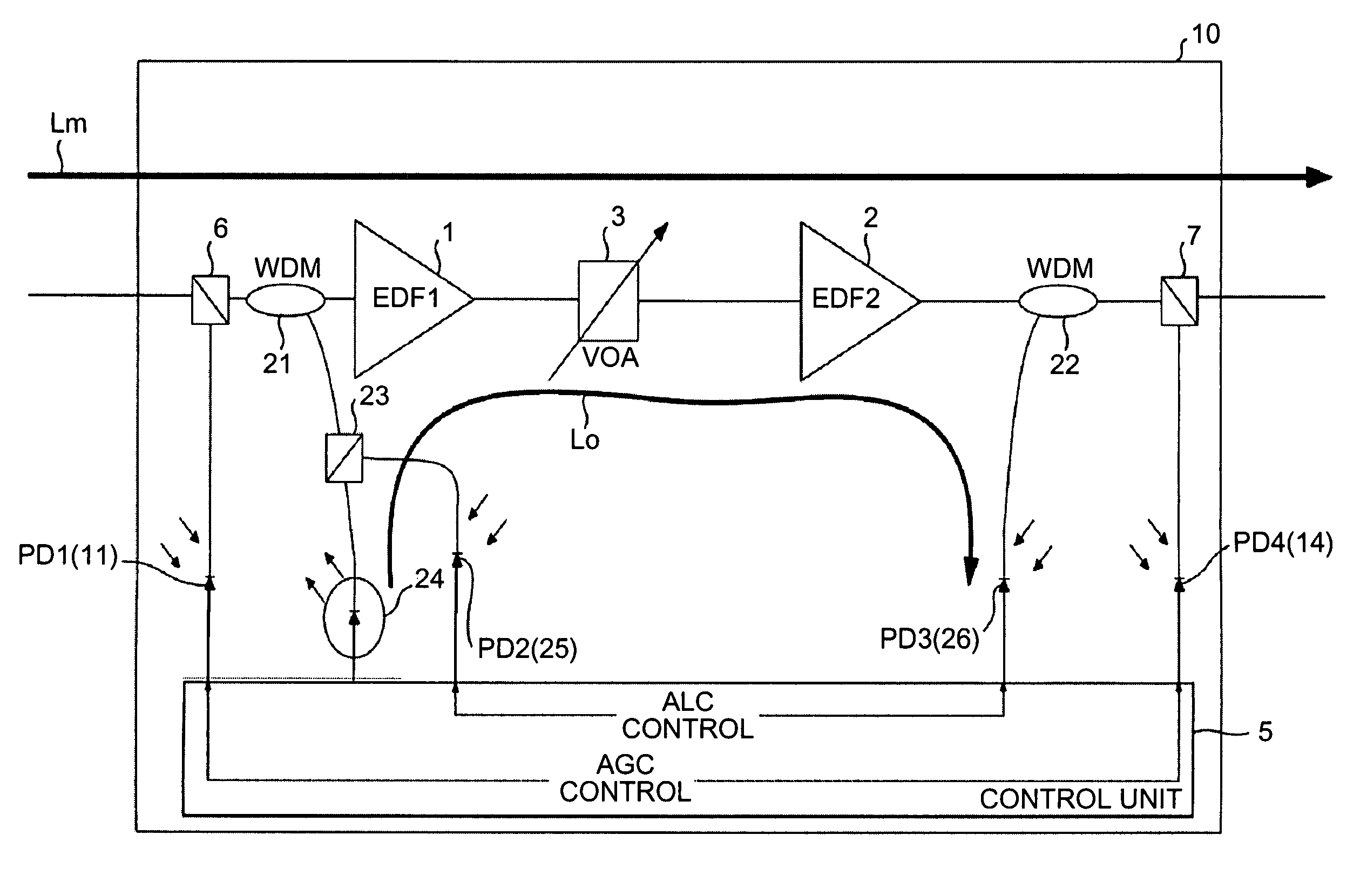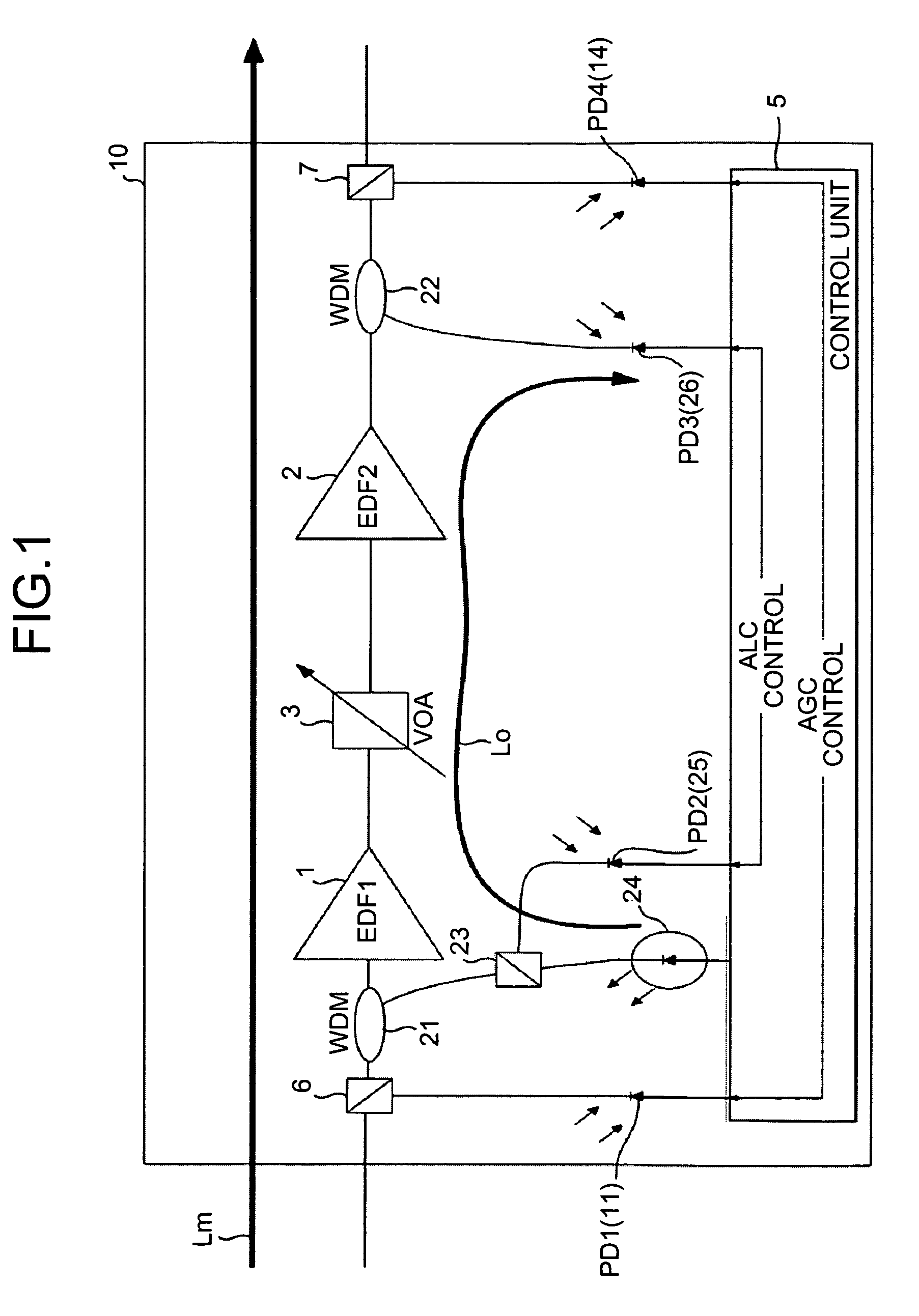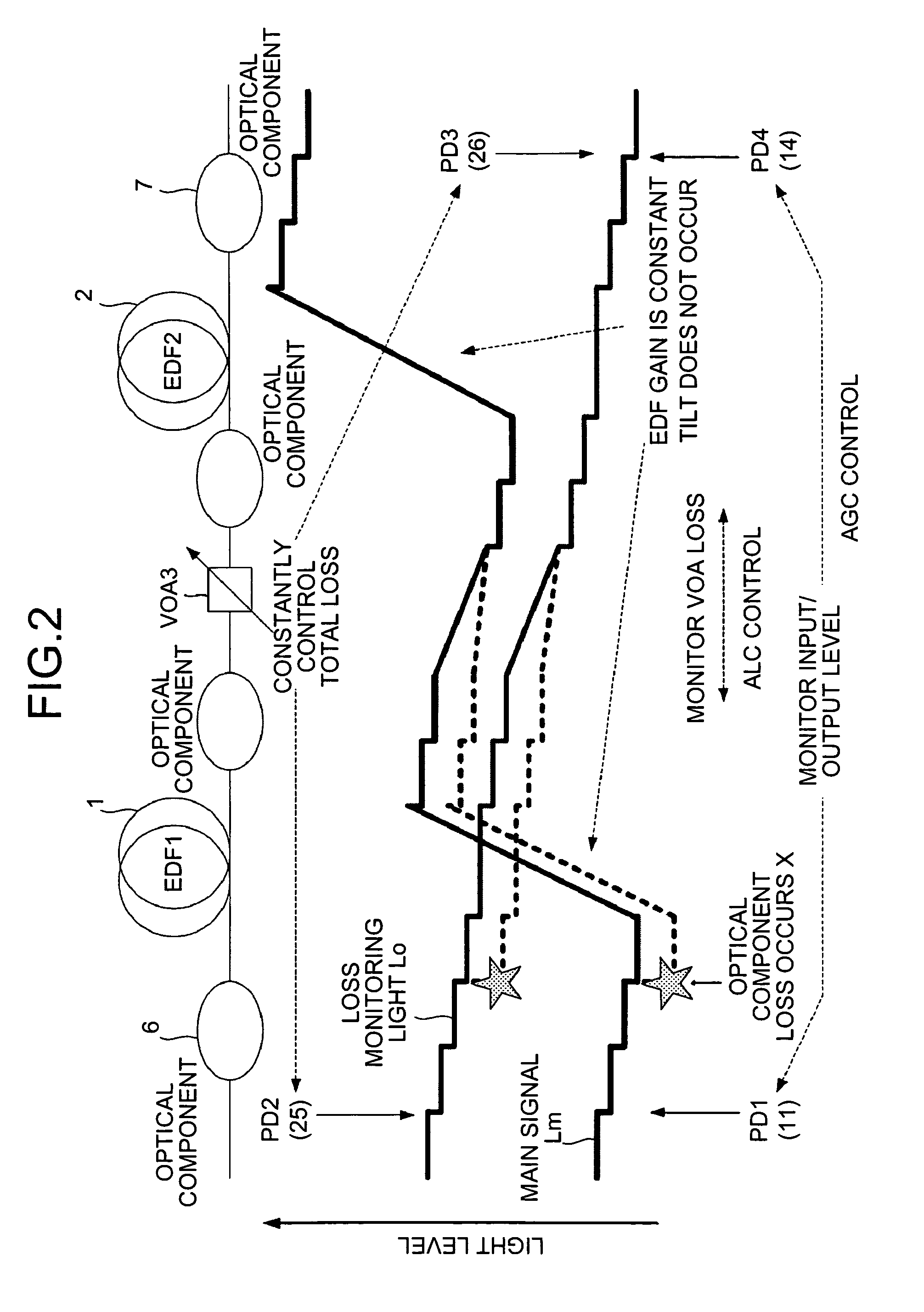Optical amplifier and optical amplification method
a technology which is applied in the field of optical amplifier and optical amplifier, can solve the problems of unintended tilt, inability to tell whether the change in the gain of the optical amplifier is caused, and fluctuation of the loss of optical components,
- Summary
- Abstract
- Description
- Claims
- Application Information
AI Technical Summary
Benefits of technology
Problems solved by technology
Method used
Image
Examples
first embodiment
[0049]FIG. 1 is a schematic of an optical amplifier according to the present invention. An optical amplifier 10 includes EDFs (an EDF 1 and an EDF 2) 1 and 2 arranged in two stages and a variable optical attenuator (VOA) 3 provided between the EDFs 1 and 2. The optical amplifier 10 performs control to make output power constant even if input power of a main signal (a light signal) Lm of a WDM on a transmission path fluctuates.
[0050]In the EDFs 1 and 2, when intensity of excitation light is changed and a gain changes as described above, tilt changes. Thus, a control unit 5 performs AGC to make gains of the EDFs 1 and 2 constant. When input power of input of the light signal Lm to the EDF 1 changes, the control unit 5 performs ALC for keeping output power of the EDF 2 constant by adjusting an attenuation amount of the VOA 3 while making a gain of the EDF 1 constant.
[0051]Plural optical components are arranged on a path of the light signal Lm in the inside of the optical amplifier 10. ...
second embodiment
[0095] it is possible to supply the loss monitoring light Lo from a single device to plural devices such as a repeater provided on the transmission path. This makes it unnecessary to provide a light source of the loss monitoring light Lo (the LD for monitoring light 24 shown in FIG. 1) for each of the devices. Thus, it is possible to perform control for compensating for a loss in each of the devices independently while simplifying a configuration of the device and reducing cost of the device.
[0096]The loss monitoring light Lo in the configuration described above attenuates as the loss monitoring light Lo propagates through the transmission path. The loss monitoring light Lo also attenuates in the devices (the multiplexing station 41, the repeating station 42, and the demultiplexing station 43 shown in FIG. 7). Therefore, a transmission distance of the loss monitoring light Lo according to the second embodiment depends on sensitivity of the PDs 2 and 3 (25 and 26) that detect the los...
third embodiment
[0105]In the present invention, when a plurality of optical amplifiers are provided in one station, a downstream optical amplification unit, which has generated an alarm, requests an upstream optical amplification unit to control output power and the like.
[0106]When a loss of a certain optical amplifier increases and the optical amplifier generates an alarm, if it is possible to increase an input level to the optical amplifier that has generated the alarm, a margin for an amount of attenuation by a VOA is generated because of the increased input level. Thus, it is possible to prevent occurrence of tilt (see, for example, FIG. 21).
[0107]A function for notifying an optical amplification unit provided upstream of a state of generation of the alarm and an amount of increase in a necessary input level is provided in the optical amplification unit that has generated the alarm. The control unit 5 (see FIG. 1) has the function. The optical amplification unit, which receives the notice of ge...
PUM
 Login to View More
Login to View More Abstract
Description
Claims
Application Information
 Login to View More
Login to View More - R&D
- Intellectual Property
- Life Sciences
- Materials
- Tech Scout
- Unparalleled Data Quality
- Higher Quality Content
- 60% Fewer Hallucinations
Browse by: Latest US Patents, China's latest patents, Technical Efficacy Thesaurus, Application Domain, Technology Topic, Popular Technical Reports.
© 2025 PatSnap. All rights reserved.Legal|Privacy policy|Modern Slavery Act Transparency Statement|Sitemap|About US| Contact US: help@patsnap.com



